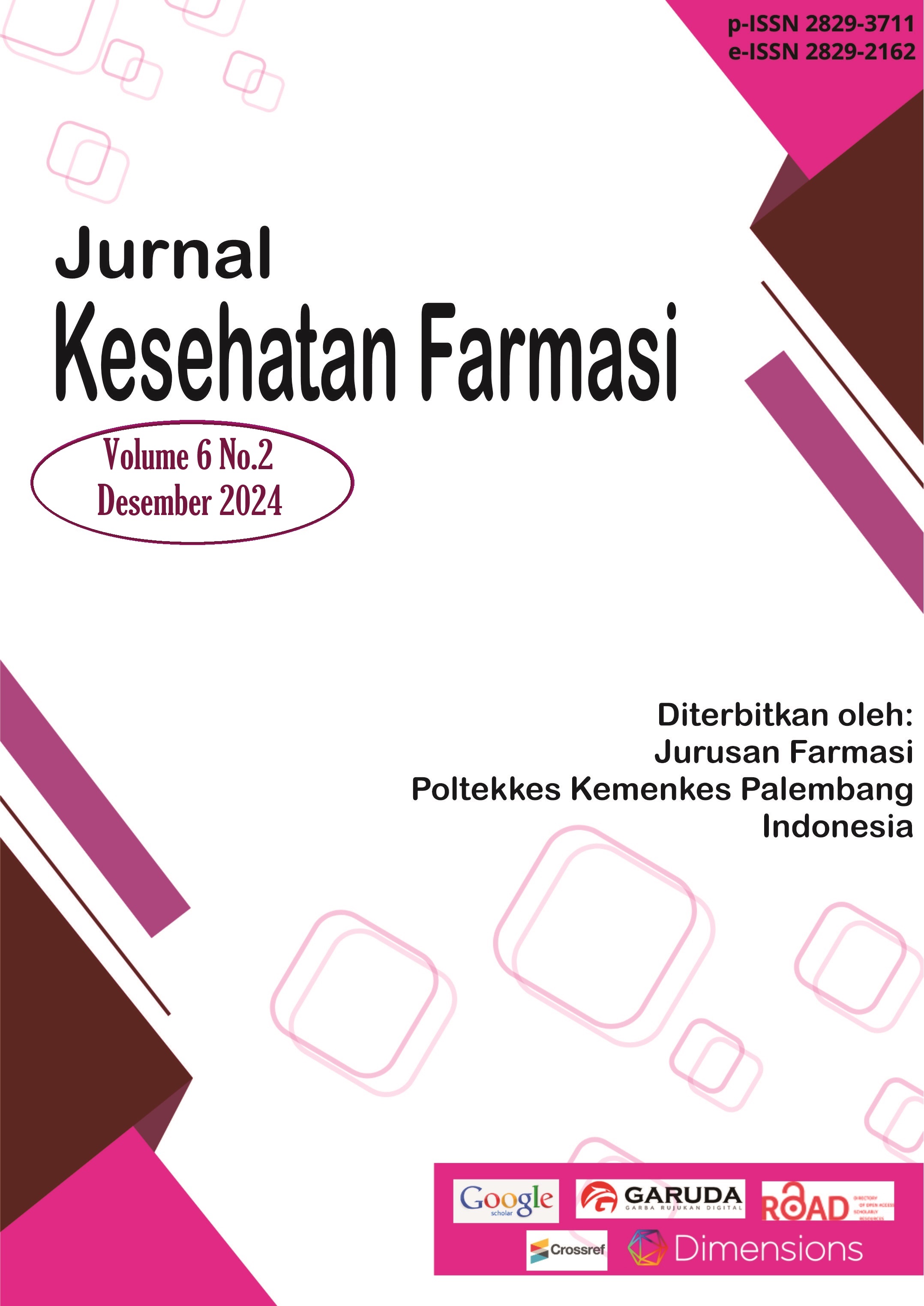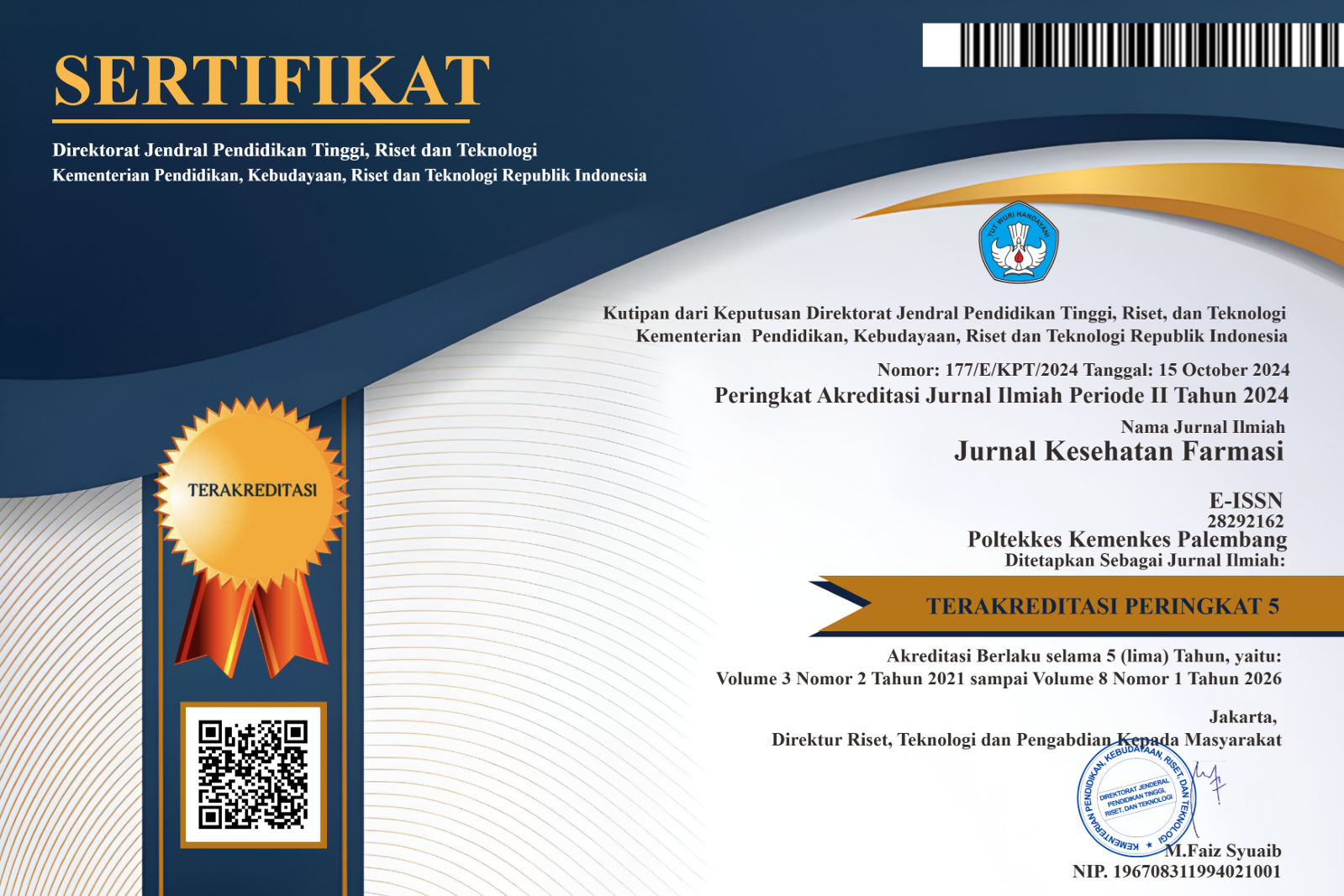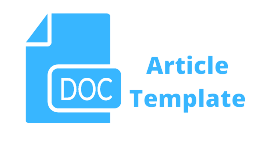UJI AKTIVITAS ANTIBAKTERI EKSTRAK UMBI BAWANG DAYAK (Eleutherine palmifolia (L). Merr) TERHADAP BAKTERI Shigella dysentriae
Abstract
Latar Belakang: Pemberian antibiotika yang tidak tepat diduga kuat dapat menyebabkan resistensi pada miroorganisme patogan Efek samping pengunaan antibiotika yang tidak tepat menyebabkn kerusakan organ. Tanaman herbal sebagai antibakteri yaitu bawang dayak Tujuan penelitian ini adalah menguji efektifitas anti bakteri ekstrak Umbi Bawang dayak (Eleutherine palmifolia (L). Merr) terhadap bakteri Shigella dysenteriae.
Metode: Design penelitian ini adalah penelitian eksperimental laboratorium dengan kelompok pembanding. Sampel yang digunakan adalah ekstrak umbi bawang dayak sebanyak 500 gram. Variabel independen adalah Konsentrasi ekstrak umbi bawang dayak (Eluetherine palmifolia), untuk KHM 20%, 30%, 40%, 50% dan 60%. untuk KBM 20%, 30%, 40%, 50%, dan 60%. Variabel Dependent adalah Aktivitas antibakteri ekstrak umbi bawang dayak (Eluetherine palmifolia) terhadap bakteri Shigella dysenteriae. Data hasil pegujiaan antibakteri dianalisis mengunakan uji ANOVA (Analysis of variant) dengan tingkat kepercayaan 95%. Jika ada perbedaan yang signifikan dilanjutkan dengan uji TukeyHSD untuk mengetahui pada konsentrasi ekstrak bawang dayak yang dapat memberikan pengaruh berbeda.
Hasil: Pada penelitian ini didapatkan hasil bahwa Ekstrak umbi bawang dayak positif mengandung golongan senyawa fenolik, flavonoid dan terpenoid. Bahwa pada konsentrasi 40% sudah mulai menunjukan adanya perubahan warna atau Konsentrasi Hambat Minimun (KHM). Pada konsentrasi 20% sudah menujukkan adanya zona bening dengan diameter rata-rata pada bakteri Shigella dysentriae 8,9 mm..
Kesimpulan: Berdasarkan analisis data maka dapat disimpulkan bahwa konsentrasi hambat minimum ekstrak umbi bawang dayak terhadap bakteri Shigella dysentriae adalah sebesar 40% dan konsentrasi bunuh minimum atau kekuatan antibiotikaa pada ekstrak umbi bawang dayak terhadap bakteri Shigella dysentriae adalah 60% dengan rerata diameter zona bening sebesar 19,7 mm.
Background: Inappropriate antibiotic administration is strongly suspected to cause resistance in pathogenic microorganisms. Side effects of inappropriate antibiotic use cause organ damage. Herbal plants as antibacterials, namely Dayak onions. This study aimed to test the antibacterial effectiveness of Dayak onion bulb extract (Eleutherine palmifolia (L). Merr) against Shigella dysenteriae bacteria.
Method: The design of this study was an experimental laboratory study with a comparison group. The sample used was 500 grams of Dayak onion bulb extract. The independent variable is the concentration of Dayak onion bulb extract (Eluetherine palmifolia), for MIC 20%, 30%, 40%, 50%, and 60%. For MBC 20%, 30%, 40%, 50%, and 60%. The dependent variable is the antibacterial activity of Dayak onion bulb extract (Eluetherine palmifolia) against Shigella dysenteriae bacteria. The antibacterial test result data were analyzed using ANOVA (Analysis of Variance) with a 95% confidence level. If there is a significant difference, it is continued with the Tukey HSD test to determine the concentration of Dayak onion extract that can provide different effects.
Results: This study found that Dayak onion bulb extract positively contains phenolic, flavonoid, and terpenoid compounds. At a concentration of 40%, it has begun to show a change in color or Minimum Inhibitory Concentration (MIC). At a concentration of 20%, it has shown a clear zone with an average diameter of 8.9 mm in Shigella dysentriae bacteria.
Conclusion: Based on data analysis, it can be concluded that the minimum inhibitory concentration of Dayak onion bulb extract against Shigella dysentriae bacteria is 40% and the minimum bactericidal concentration or antibiotic strength of Dayak onion bulb extract against Shigella dysentriae bacteria is 60% with an average clear zone diameter of 19.7 mm.
Copyright (c) 2024 Jurnal Kesehatan Farmasi

This work is licensed under a Creative Commons Attribution-ShareAlike 4.0 International License.
Authors who publish with this journal agree to the following terms:
- Authors retain copyright and grant the journal right of first publication with the work simultaneously licensed under a Creative Commons Attribution License that allows others to share the work with an acknowledgement of the work's authorship and initial publication in this journal.
- Authors are able to enter into separate, additional contractual arrangements for the non-exclusive distribution of the journal's published version of the work (e.g., post it to an institutional repository or publish it in a book), with an acknowledgement of its initial publication in this journal.
- Authors are permitted and encouraged to post their work online (e.g., in institutional repositories or on their website) prior to and during the submission process, as it can lead to productive exchanges, as well as earlier and greater citation of published work














